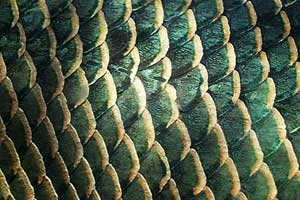 Under the dermis and beneath the scales, there is a dense distribution of pigment cells and light cells. However, pigment cells alone cannot give fish their vibrant colors.
Under the dermis and beneath the scales, there is a dense distribution of pigment cells and light cells. However, pigment cells alone cannot give fish their vibrant colors.
Within the skin of fish, there is also a type of light cell, which contains substances such as guanine and cytoplasm, consisting of colorless or white crystals that accumulate within the cells.
When light hits the body of the fish, through the reflection and interference of the crystals within these cells, the light that appears to our eyes becomes a shimmering silver. Therefore, the shiny scales of fish are primarily due to the action of the light cells.


















































